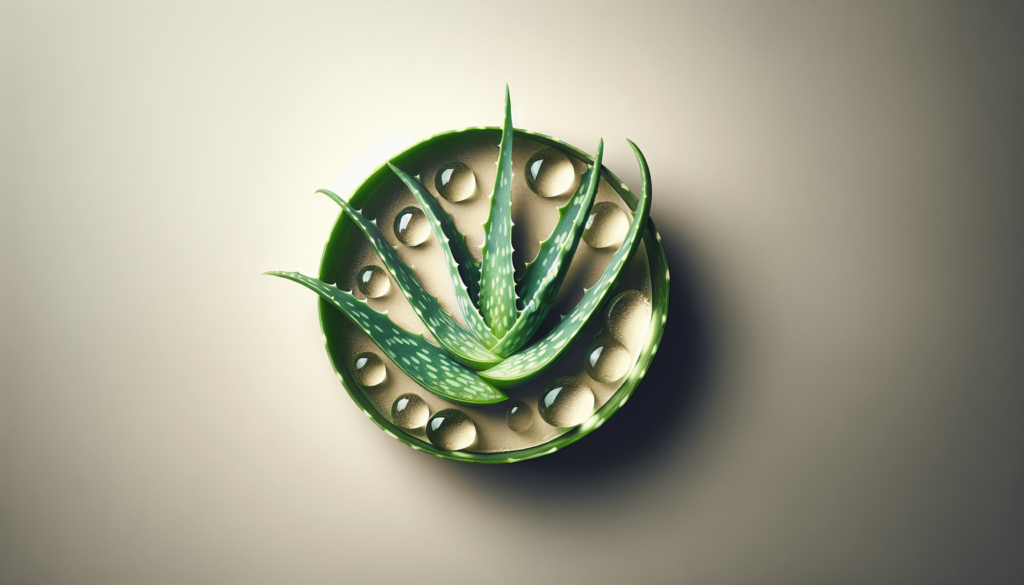If you’ve ever had to deal with the discomfort and embarrassment of allergy-induced rashes, you know how frustrating they can be. In “Top Ways To Alleviate Redness From Allergy-Induced Rashes,” you’ll find practical and soothing remedies that can help you diminish redness and regain your comfort. From natural treatments to over-the-counter solutions, this guide has got you covered with effective methods to ease your skin’s irritation and restore its natural glow. Dive in to discover how you can take charge of your skin health and wave goodbye to those bothersome rashes. Have you ever found yourself dealing with annoying and sometimes painful red rashes due to allergies? If so, you’re not alone. Many people experience allergy-induced rashes, and finding ways to alleviate that redness can feel like an uphill battle. However, with the right approach and knowledge, you can effectively tackle those troublesome rashes and find relief. Let’s dive deep into the top ways you can alleviate redness from allergy-induced rashes and get that much-needed comfort.
Understanding Allergy-Induced Rashes
Before jumping into the remedies, it’s essential to first understand what exactly allergy-induced rashes are and why they manifest.
What Are Allergy-Induced Rashes?
Allergy-induced rashes are skin reactions that occur when your body’s immune system reacts to an allergen like pollen, dust, certain foods, or animal dander. This defensive reaction causes inflammation and redness, often accompanied by itching or a stinging sensation.
Why Do They Happen?
When your body detects an allergen, it releases histamines into the bloodstream. These histamines cause the blood vessels to expand and skin cells to react, resulting in a rash. Understanding this mechanism can make it easier to tackle the root cause and find effective treatments.
Primary Steps to Alleviate Redness
When dealing with allergy-induced rashes, it is crucial to follow some primary steps that can mitigate the inflammation and redness quickly.
Step 1: Identify and Eliminate the Allergen
The first and foremost step in alleviating redness from a rash is to identify what is causing the allergic reaction. This could be a specific type of food, a skincare product, or even your pet.
Step 2: Cleanse Affected Area
Once you’ve identified the allergen, it’s vital to cleanse the affected area thoroughly to remove any residual allergens. Use a mild, hypoallergenic soap, and lukewarm water for cleansing.
Step 3: Use Cold Compresses
A cold compress can help reduce inflammation and soothe the skin. Apply a cold, damp cloth to the affected area for about 10-15 minutes. This can significantly reduce redness and provide temporary relief from itching.

Over-the-Counter Remedies
There are several over-the-counter (OTC) remedies that can help reduce redness and inflammation from allergy-induced rashes.
Antihistamines
Antihistamines can block the histamine response and reduce symptoms like redness, swelling, and itching. Popular OTC antihistamines include Benadryl (diphenhydramine) and Claritin (loratadine).
Table: Common OTC Antihistamines
| Medication | Active Ingredient | Typical Use | Side Effects |
|---|---|---|---|
| Benadryl | Diphenhydramine | Allergic Reactions | Drowsiness, Dry Mouth |
| Claritin | Loratadine | Seasonal Allergies | Headache, Dizziness |
| Zyrtec | Cetirizine | Year-Round Allergies | Fatigue, Dry Mouth |
Topical Corticosteroids
Topical corticosteroids can significantly reduce inflammation and redness. Hydrocortisone cream is a commonly used OTC option.
Calamine Lotion
Calamine lotion can soothe itchy skin and reduce redness. It’s particularly effective for mild rashes and can be applied multiple times a day.
Prescription Treatments
If OTC treatments don’t bring relief, you may need to consult a healthcare provider for prescription medications.
Stronger Antihistamines
A doctor may prescribe stronger antihistamines if OTC options are insufficient. These can offer more potent relief from severe symptoms.
Prescription Corticosteroids
If over-the-counter corticosteroids aren’t effective, stronger prescription variants may be necessary. Your healthcare provider might prescribe a more potent cream or even oral corticosteroids for severe reactions.
Immunotherapy
In some cases, immunotherapy (allergy shots) can help reduce your sensitivity to allergens over time, offering a long-term solution to recurring allergic rashes.

Natural and Home Remedies
If you prefer natural or home remedies, there are numerous options that can help reduce redness and provide relief.
Aloe Vera
Aloe Vera is renowned for its soothing properties. Applying fresh Aloe Vera gel can reduce inflammation and redness while promoting healing.
Oatmeal Baths
An oatmeal bath can significantly relieve itching and redness. Colloidal oatmeal specifically binds to the skin and forms a protective barrier, helping to lock in moisture and reduce irritation.
Coconut Oil
Coconut oil has anti-inflammatory and moisturizing properties, making it a great option for soothing irritated skin. Apply a thin layer to the affected area and allow it to absorb.
Apple Cider Vinegar
Diluted apple cider vinegar can help restore the skin’s natural pH balance and reduce redness. Mix one part apple cider vinegar with two parts water and apply it using a cotton ball.
Lifestyle Changes
Diet
Eating certain foods can trigger or exacerbate allergic reactions. It’s advantageous to maintain a food diary to track your intake and identify problematic foods.
Table: Common Allergy-Inducing Foods
| Type | Common Culprits |
|---|---|
| Nuts | Peanuts, Almonds |
| Dairy | Milk, Cheese |
| Seafood | Shrimp, Crab |
| Fruits | Strawberries, Citrus Fruits |
Hydration
Keeping your skin hydrated can go a long way in reducing redness. Drink plenty of water to keep your skin supple and moisturized.
Stress Management
Stress can weaken your immune system, making you more prone to allergic reactions. Techniques like yoga, meditation, and exercise can help manage stress levels.
Practical Tips for Daily Management
Wear Loose Clothing
Tight clothing can exacerbate rashes and make them more uncomfortable. Opt for loose, breathable fabrics like cotton.
Moisturize Regularly
Keeping your skin well-moisturized can help prevent rashes from becoming dry and itchy. Use a hypoallergenic moisturizer to keep your skin nourished.
Use Hypoallergenic Products
From laundry detergents to skincare products, opt for hypoallergenic options to minimize potential allergens.
Avoid Scratching
While it can be incredibly tempting, scratching can worsen the rash and lead to infections. Keep your nails trimmed and consider wearing gloves at night if you tend to scratch in your sleep.
When to See a Doctor
In some cases, home remedies and OTC treatments may not be enough. It’s vital to consult a healthcare professional if:
- The rash is spreading or worsening
- You experience severe itching or pain
- You develop additional symptoms like fever or swelling
Summary
In summary, alleviating redness from allergy-induced rashes involves a multifaceted approach including identification and elimination of the allergen, cleansing, using cold compresses, OTC remedies, prescription treatments, natural remedies, and lifestyle changes. Equipping yourself with this knowledge and tools can make managing allergy-induced rashes much more bearable. Remember, it’s always essential to consult with a healthcare provider for severe or persistent symptoms.
If you’re dealing with these kinds of rashes, know that relief is within reach. By following these thorough steps and being proactive, you can greatly reduce redness and improve your comfort. Here’s to clearer, calmer skin and a more comfortable you!
